Orion EFT-1
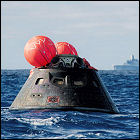 NASA launches Exploration Flight Test 1, the maiden unmanned voyage of the next-generation Orion space vehicle which is intended to assume the Space Shuttle’s place as NASA’s primary manned spacecraft. Heavily instrumented, Orion is boosted to a high altitude of 3,600 miles during its second orbit, and returns to Earth at 20,000mph, the fastest return of a man-rated spacecraft since the Apollo lunar missions. The flight profile of the EFT-1 mission is similar to that of 1967’s Apollo 4 mission, though ongoing budget constraints force NASA to launch Orion atop a Delta IV Heavy booster rather than the Space Launch System booster for which Orion has been designed. This budget crunch also prevents the Orion program from moving forward at the pace of Apollo: the next Orion flight will not take place for several years. Orion EFT-1 is also the first American spacecraft to be recovered from sea after a splashdown since 1975’s Apollo-Soyuz mission.
NASA launches Exploration Flight Test 1, the maiden unmanned voyage of the next-generation Orion space vehicle which is intended to assume the Space Shuttle’s place as NASA’s primary manned spacecraft. Heavily instrumented, Orion is boosted to a high altitude of 3,600 miles during its second orbit, and returns to Earth at 20,000mph, the fastest return of a man-rated spacecraft since the Apollo lunar missions. The flight profile of the EFT-1 mission is similar to that of 1967’s Apollo 4 mission, though ongoing budget constraints force NASA to launch Orion atop a Delta IV Heavy booster rather than the Space Launch System booster for which Orion has been designed. This budget crunch also prevents the Orion program from moving forward at the pace of Apollo: the next Orion flight will not take place for several years. Orion EFT-1 is also the first American spacecraft to be recovered from sea after a splashdown since 1975’s Apollo-Soyuz mission.
Saturn V F-1 engine revived for tests
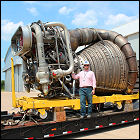 NASA recalls an actual 1960s F-1 engine – of which clusters of five once launched the mighty Saturn V rockets during the Apollo lunar program – from the Smithsonian for refurbishment and, for the first time in over four decades, re-firing on a test stand at Marshall Space Flight Center in Alabama. NASA engineers examine the properties of the F-1 engine – whose performance still outrates the engines used during the Space Shuttle program – to learn how to improve the J-2X engines planned for use in the first stage of the SLS (Space Launch System) booster that will launch Orion vehicles.
NASA recalls an actual 1960s F-1 engine – of which clusters of five once launched the mighty Saturn V rockets during the Apollo lunar program – from the Smithsonian for refurbishment and, for the first time in over four decades, re-firing on a test stand at Marshall Space Flight Center in Alabama. NASA engineers examine the properties of the F-1 engine – whose performance still outrates the engines used during the Space Shuttle program – to learn how to improve the J-2X engines planned for use in the first stage of the SLS (Space Launch System) booster that will launch Orion vehicles.
ESA to provide Orion service modules
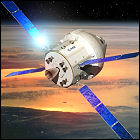 The European Space Agency and NASA sign an agreement allowing ESA to provide service modules for the upcoming Orion manned spacecraft, with the first module flying as part of an unmanned test scheduled to take place in 2017. While the Orion command module capsules will be built for NASA by contractor Lockheed Martin, the service modules to which the capsules will be connected are to be provided by ESA and customized for each mission (which could include long-duration flights to the moon, asteroids, or Mars). The service module’s “X-wing solar panel” design is derived from ESA’s Automated Transfer Vehicle cargo ferries dispatched to the International Space Station; ESA’s commitment to Orion will replace its obligation to provide further unmanned freighters to the space station.
The European Space Agency and NASA sign an agreement allowing ESA to provide service modules for the upcoming Orion manned spacecraft, with the first module flying as part of an unmanned test scheduled to take place in 2017. While the Orion command module capsules will be built for NASA by contractor Lockheed Martin, the service modules to which the capsules will be connected are to be provided by ESA and customized for each mission (which could include long-duration flights to the moon, asteroids, or Mars). The service module’s “X-wing solar panel” design is derived from ESA’s Automated Transfer Vehicle cargo ferries dispatched to the International Space Station; ESA’s commitment to Orion will replace its obligation to provide further unmanned freighters to the space station.
Vehicle Assembly Building open for business
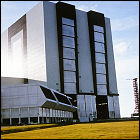 NASA’s massive Vehicle Assembly Building is completed at the spaceport rapidly taking shape on Cape Canaveral ahead of the Apollo lunar missions. Topped off at a total cost of $117,000,000, the VAB is where Saturn V rockets are assembled for the Apollo moonshots, and the huge, eight-acre building will later transition to the assembly of the Space Shuttle launch system elements and the Space Launch System boosters for the 21st century Orion program.
NASA’s massive Vehicle Assembly Building is completed at the spaceport rapidly taking shape on Cape Canaveral ahead of the Apollo lunar missions. Topped off at a total cost of $117,000,000, the VAB is where Saturn V rockets are assembled for the Apollo moonshots, and the huge, eight-acre building will later transition to the assembly of the Space Shuttle launch system elements and the Space Launch System boosters for the 21st century Orion program.
The Vehicle Assembly Building
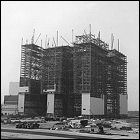 Construction commences on NASA’s massive Vehicle Assembly Building (originally named the Vertical Assembly Building), where the giant Saturn V rockets for Apollo lunar missions will be constructed, tested, and then rolled out to the launch pad atop huge mobile crawlers. Covering eight acres of land on Merritt Island, Florida, the building must withstand Florida’s notorious hurricane seasons (and protect any rockets under construction within) as well as the shockwaves of Saturn V rocket launches taking place only three miles away; special ventilation and humidity control systems have to be built as well, as the interior space is so voluminous that the building has its own internal weather! The VAB will later transition to the assembly of the Space Shuttle launch system elements and the Space Launch System boosters for the 21st century Orion program.
Construction commences on NASA’s massive Vehicle Assembly Building (originally named the Vertical Assembly Building), where the giant Saturn V rockets for Apollo lunar missions will be constructed, tested, and then rolled out to the launch pad atop huge mobile crawlers. Covering eight acres of land on Merritt Island, Florida, the building must withstand Florida’s notorious hurricane seasons (and protect any rockets under construction within) as well as the shockwaves of Saturn V rocket launches taking place only three miles away; special ventilation and humidity control systems have to be built as well, as the interior space is so voluminous that the building has its own internal weather! The VAB will later transition to the assembly of the Space Shuttle launch system elements and the Space Launch System boosters for the 21st century Orion program.